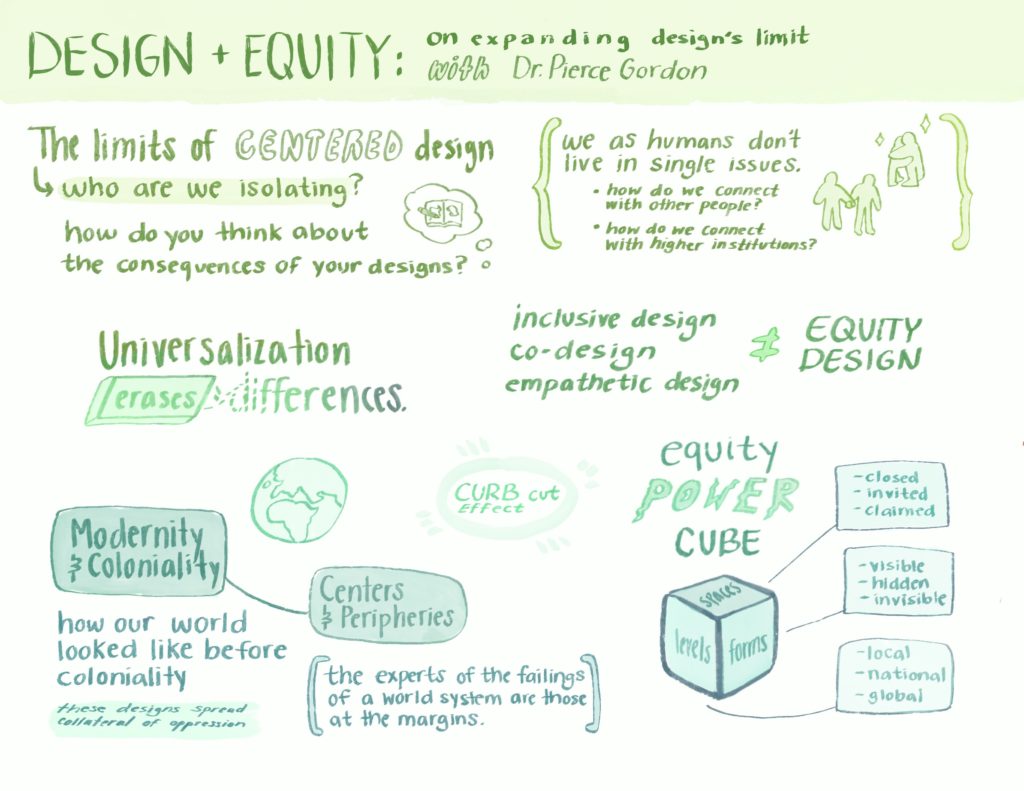Dr.Pierce’s workshop begins by taking a moment to pause and breathe; something I think we all forget to intentionally do. He encourages us to reflect and analyze everything we are taking in and are a part of. I meditate on where I am calling from, Los Angeles (Tongva land), the city that has brought me so many opportunities and continues to evolve as my curiosity grows.
The conversation moves forward into recognizing the history of previous design networks and complex projects. We are presented with images of how the world looked like before colonialism referring to the Old World Trade Routes of the 1300’s that then expanded to a Mercantilist World Economy from the 1500’s to 1700’s. These systems established centers and peripheries that were replicated throughout structures like university institutions, religious organizations, and gender/sex binaries. As a queer gender-fluid Mexican-American person, these toxic idealized aesthetics and oppressive hierarchies are continuously questioning my existence, so when we further discuss the consequences of design and the way that it may affect the future, I am eagerly taking notes. Instead of being divided into sub-groups and using sticky notes, each participant is sent an excel spreadsheet outlined with sections. One of these sections was to think about the opportunities that arise at the intersections between the methods, tools, or resources we use as designers and the values, expertises, or experiences that reflect struggles of equity and liberation.
Most of us rely on notebooks, Adobe Suite or internet archives to advance our studies while themes of intersectional identities, accessibility and capitalism loom in our everyday mindset. Some ideas that arose were collaborating on an economic system that is regenerative for all, empowering voices that are commonly considered marginalized in social classes, or holding space for community members to be held accountable and to listen around how they can better support the BLM movement in their work. While we begin to offer these alternatives, we are also re-imagining/ re-framing safe, equitable, and resourceful spaces that would allow ourselves and others to thrive in. The equity power cube further acknowledges subjects to take into consideration: Forms (visible, hidden or invisible), Levels (local, national, global), and Spaces (closed, invited, claimed).
Dr.Pierce closes the presentation by sharing with us the events, videos, and documents that he mentioned throughout and opens the zoom call to final questions and thoughts. As a passionate student who appreciates expanding my knowledge through a variety of materials and information, I am grateful to have additional assets to refer to. Design and equity are integral parts of world-building and as we continue to outline every person’s unique identity and narrative, I hope that the development of a more antiracist, equitable, creative and collaborative community framework is near.

